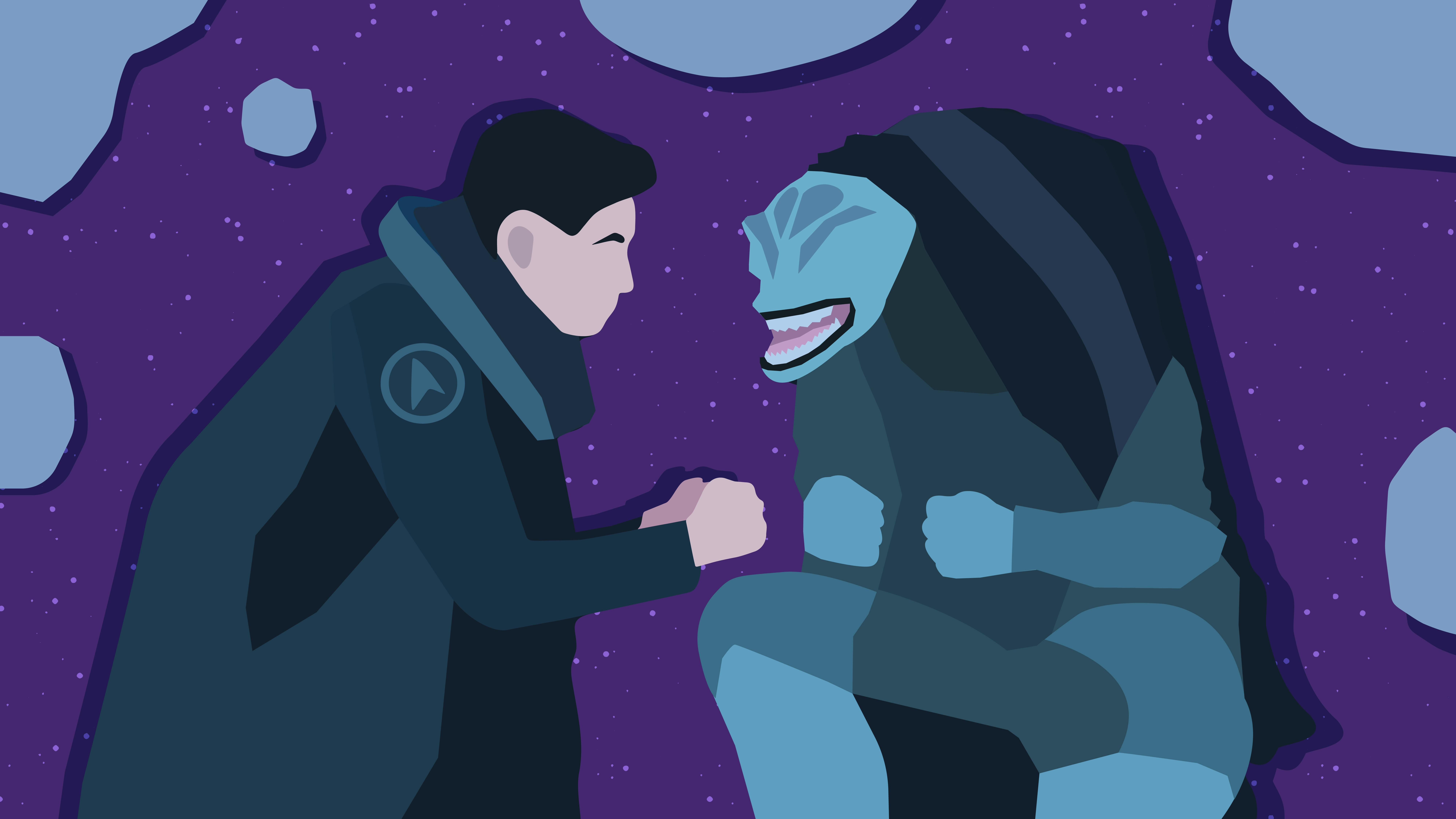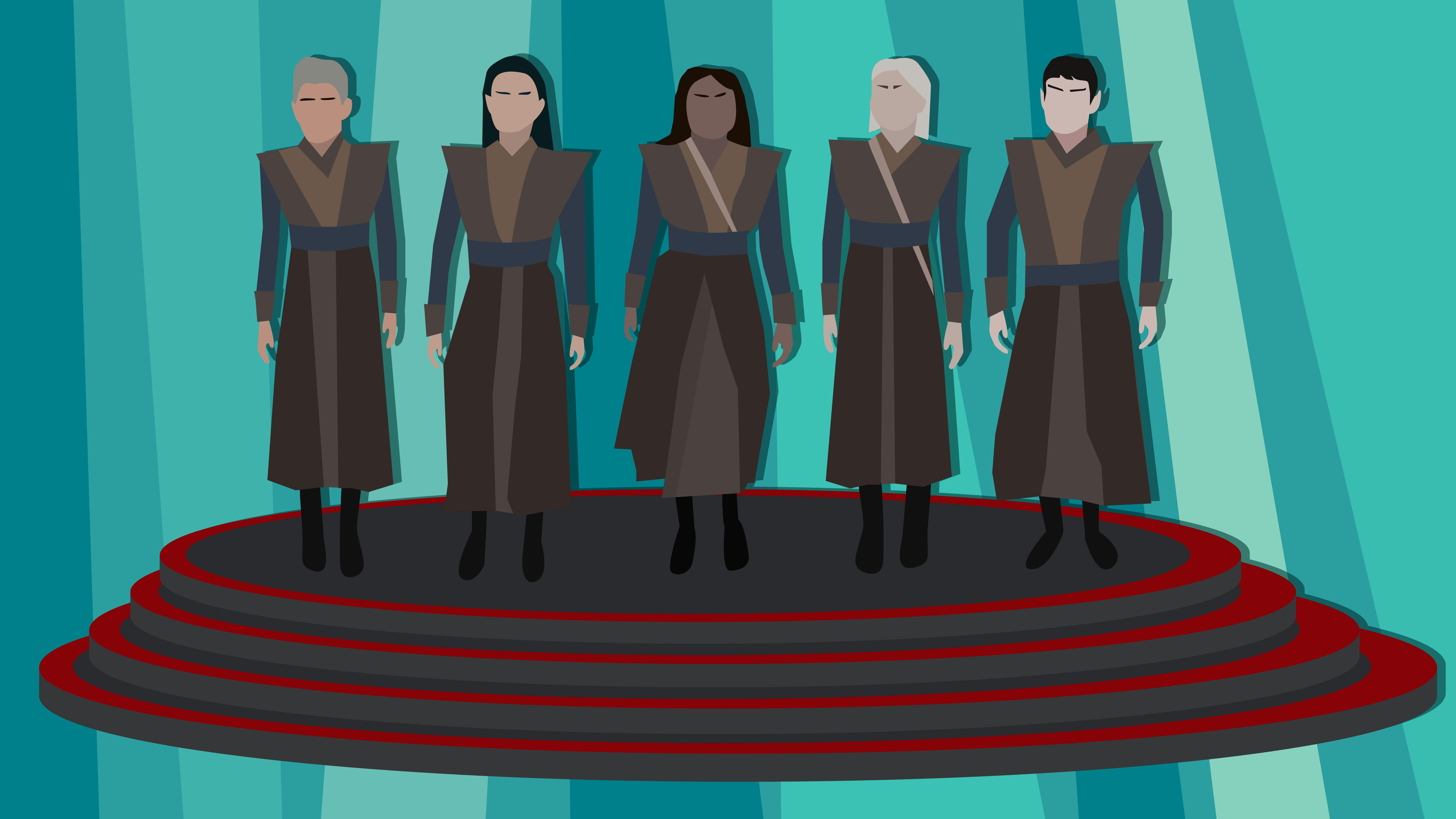Published Aug 20, 2025
WARP FIVE: Strange New Worlds Director Puts Kirk in the Captain's Chair
Valerie Weiss delves into infusing humor into drama, James T. Kirk's first time in command, and more!
SPOILER WARNING: This interview contains story details and plot points for Star Trek: Strange New Worlds.

Getty Images / StarTrek.com
Welcome to Warp Five, StarTrek.com's five question post-mortem with your favorite featured talent from the latest Star Trek episodes.
In ' third season, we finally see on-screen the moment when James T. Kirk steps into command as Captain of the U.S.S. Farragut after a disastrous run-in with a deadly scavenger ship.
With "," director Valerie Weiss returns to the helm for her second run in the Star Trek universe. StarTrek.com had the opportunity to talk to the scientist-turned-director on infusing some levity into a dramatic episode, James T. Kirk's pivotal Starfleet milestone, and more.
On the Reception of "Ad Astra per Aspera"
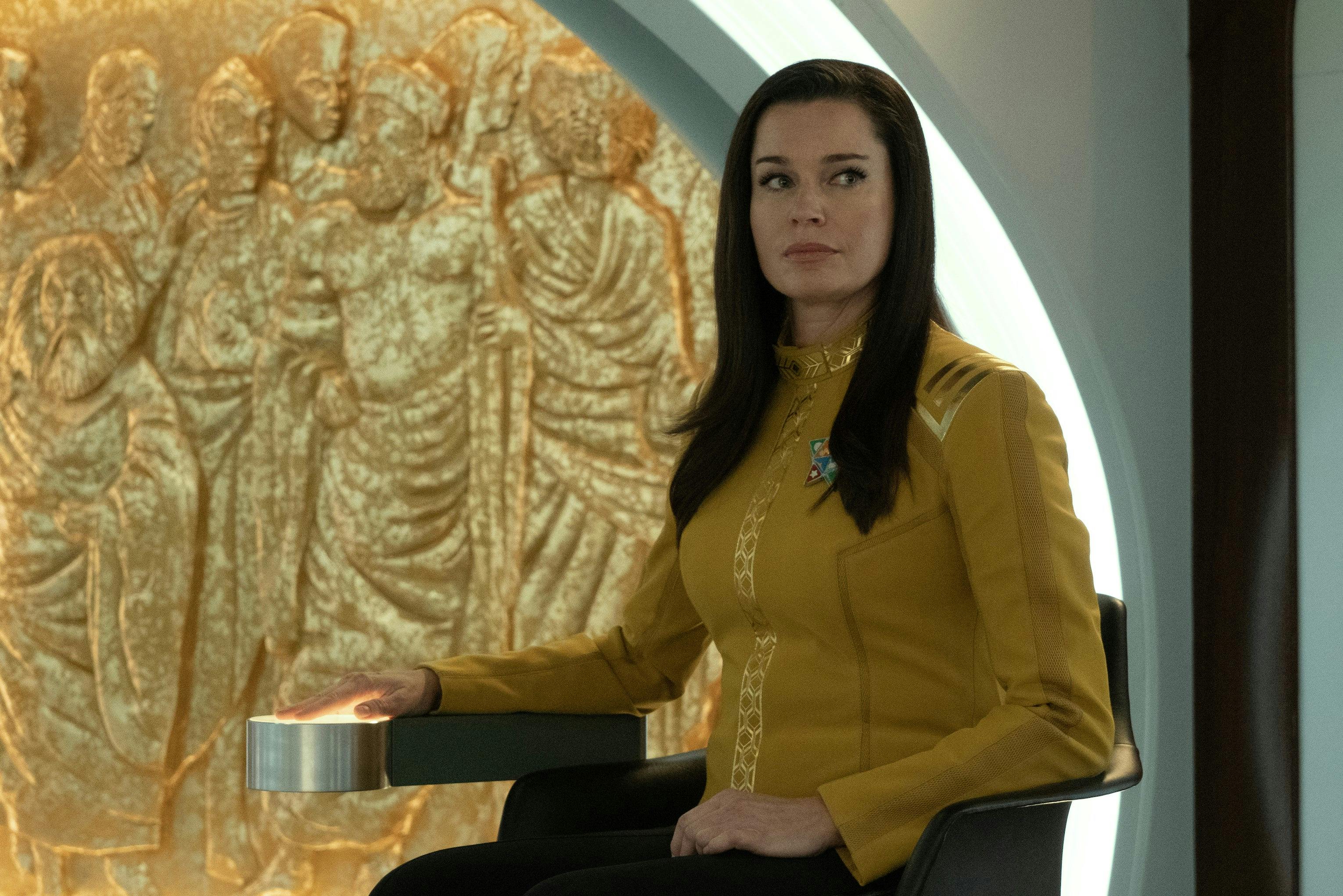
"Ad Astra per Aspera"
StarTrek.com
Weiss' for Star Trek, "," reached critical acclaim with the fandom, regarded not only as one of Star Trek's best , but among the best of all Star Trek.
"It's really exciting because I love that episode," reacts Weiss. "That episode meant so much to me for so many reasons. I was very new to the Trek world. I wasn't exposed to it before doing it. That's an incredible compliment."
"I was a scientist," Weiss explains, "and I got into directing because I wanted to take that filter of being a scientist and really look at things and look at people, and why the world is the way it is, and apply it to story. Star Trek does it better than anything else in the whole world. It really goes so deep with its themes. To be able to just take my instincts as a director and put it through the Star Trek filter, I feel so proud that I was able to accomplish that with this series. Hopefully this episode does that too. I did the same thing with this episode that I did with that one, so I really hope fans feel the same way about it."
On Laying Out Kirk's Early Foundation

"The Sehlat Who Ate Its Tail"
In "The Sehlat Who Ate Its Tail," Lt. Commander James T. Kirk is thrust into the captain's chair after the Farragut's captain suffers injuries following an encounter with scavengers. Answering the Farragut's distress call, the Enterprise is pulled into the fray. Kirk is suddenly overwhelmed with being responsible for the fate of his crew as well as the Enterprise's crew.
Like with "Ad Astra per Aspera," Weiss made it a point to sit down with each cast member to walk through the episode.
"I was so lucky," Weiss shares. "Paul [Wesley] is so lovely. In fact, he told me when we started working together to read . It was a huge help. Very early on, I reached out to have brunch and talked to him, and he's like, 'This is big. This is a huge responsibility, this episode.' I said, 'I know, for both of us.'"

"The Sehlat Who Ate Its Tail"
StarTrek.com
"We went very deep with the character," continues Weiss. "I even made a graph of his arc as a leader and what that means. As a director, I very much related to this idea of being a captain, because nobody teaches you how to do it. You learn by doing, and you make a lot of mistakes along the way. I really tried to use the personal to be universal."
"Paul was amazing," says Weiss. "He worked so hard. We rehearsed a lot. We rehearsed with Ethan [Peck], we rehearsed with Anson [Mount]. That last scene with him and Anson was so, so beautiful. They were both so vulnerable and they have so much respect for each other. I loved being able to direct those important scenes between Kirk and Spock, and Kirk and Pike. I'm just so honored I got to do that."
Speaking on how this episode demonstrated glimpses of the future Captain Kirk we'll see in The Original Series, Weiss notes, "That's what I tried to do; that you see his personality. A big core of why [TOS] Kirk is so fabulous is it's about his intuition. This episode shows that while he doesn't have much experience and he's got a lot to learn, what he does have is a really good intuition. When Spock reminds him to listen to that, that's when things start to turn around. It's a nice thing that we were able to sort of cement that in the canon of Star Trek."
On the Visual Element of Kirk's Captaincy
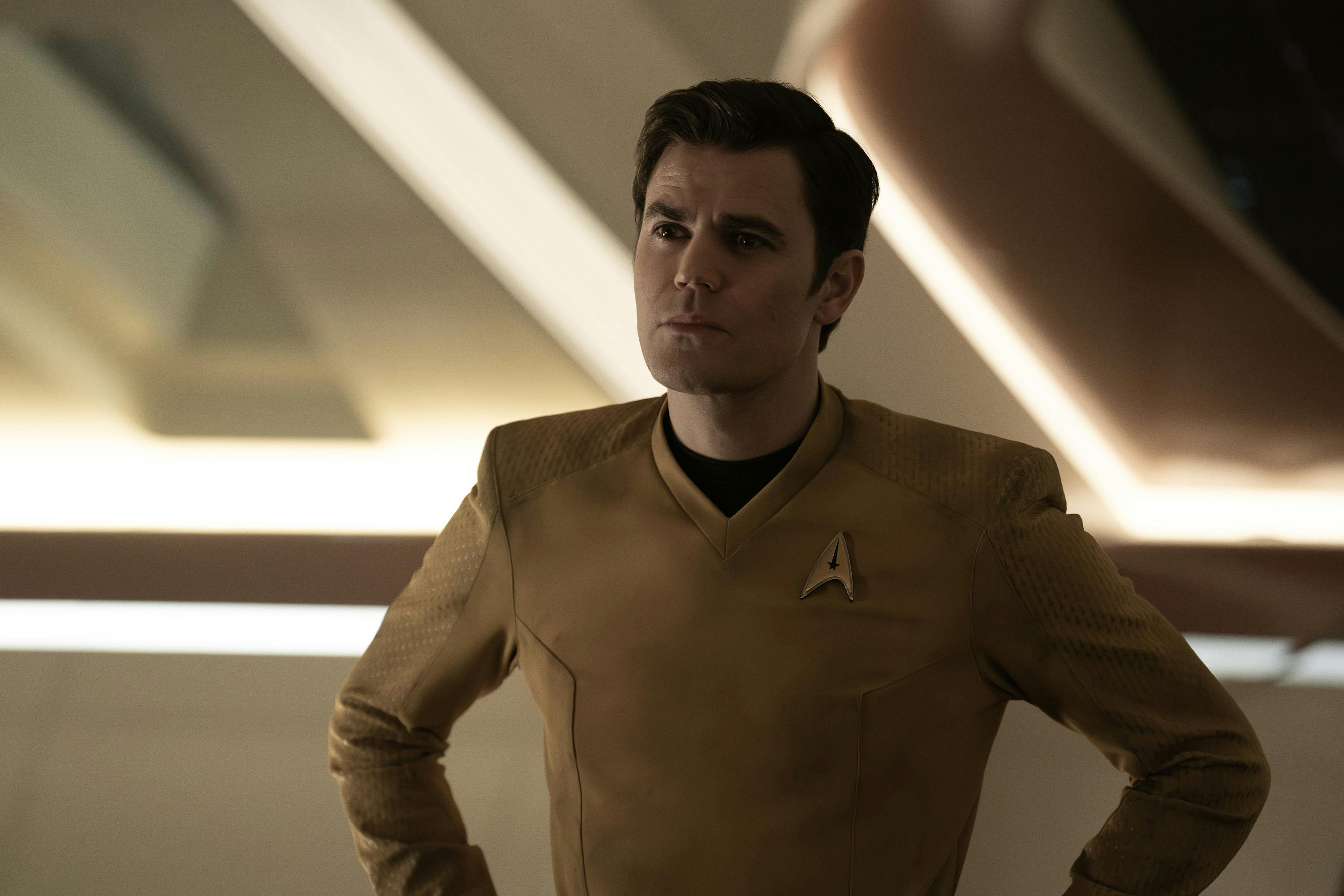
"The Sehlat Who Ate Its Tail"
StarTrek.com
The Farragut's center seat was a daunting presence throughout the episode.
"That was my favorite part," explains Weiss. "Visually, it was so fun to use the chair as a symbol. There are three main movements, if we're thinking of this music where the chair comes into play. When he first finds out that V'Rel is no longer in command of the ship and [Kirk's] acting captain. He's just standing next to it; it's like this intimidating thing that he can't wrap his head around. Even though he was just talking a big game, that he would do a better job than her, like most people right before they have to do it."
"'Heavy is the head that wears the crown,'" Weiss continues. "Then it's almost like the chair is a character in itself, and it's not going to let Kirk sit in it until he's ready. The second time we show it, he's like, 'I'll be accepting drinks in the galley.' He's got so much hubris. When he sits down, the ship is like, 'Uh-uh.' It starts shaking and it basically ejects from it."
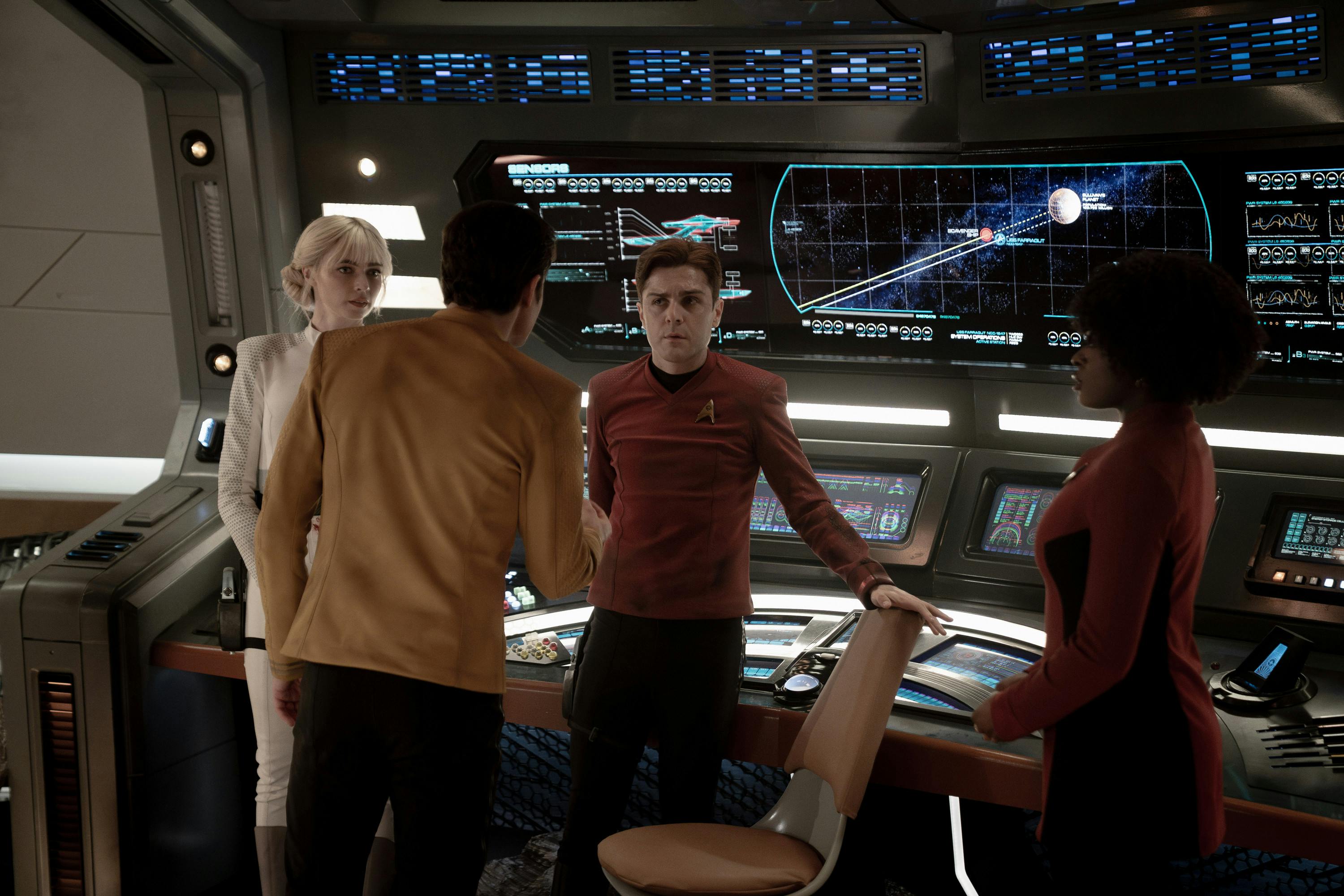
"The Sehlat Who Ate Its Tail"
StarTrek.com
"It's only when he reaches his arc, and learns from Spock and the rest of them that a real leader trusts their crew," Weiss adds. "Listening is such a big part of being a leader. It goes into this idea of empathy, which is a big part of the theme of the episode too. When Pike says, 'Empathy isn't conditional; it's either given or it isn't.' Once he learns that, the chair accepts him and lets him sit in it, but the kicker is it's not easy to be captain. 7,000 lives were taken."
"The episode doesn't give an answer," states Weiss. "It doesn't say what's right or wrong. It says, 'You're going to make hard decisions, and you're not always going to make the right ones, but you have to make a decision.' Just like when Scotty says both options are terrible, but they have to choose one. Scotty says they have to choose what is 'least terrible,' and Kirk's like, "Neither option.' Well, that's not acceptable. That's not a leader. There's just so many great moments and themes in this episode, and the cast is fabulous. The crew's amazing. I loved getting to work on it.
On Balancing Two Captains and Two Starships

"The Sehlat Who Ate Its Tail"
StarTrek.com
With "The Sehlat Who Ate Its Tail," Weiss had to balance the events aboard the Farragut and the Enterprise, especially as communications between both starships were blocked.
"I looked back at my script and I had made a note," says Weiss. "It was really important to me that we always help the audience track which ship we're on. Because the bridge, it's the same set. We're just decorating it different; one's wrecked, one's not."
"When I talked to Bill Wolkoff, one of the writers, before I shot, I told him it was really important to make sure that Pike has a parallel arc to, or an anti-parallel arc to Kirk, because this is Kirk's story, but we're on two ships. How do we get people to care about the other ship? What we came up with was, Pike is a leader who's seasoned, who knows what to do, but he should falter. That moment in the Port Galley where they're hiding, he says, 'Set your phasers to kill,' that's uncharacteristic for him. La'An looks at him surprised, questioning if he's even the same person. He has a slip up in leadership, but he later learns and understands that they didn't shoot him because of being human and empathy. I wanted that parallel between them."
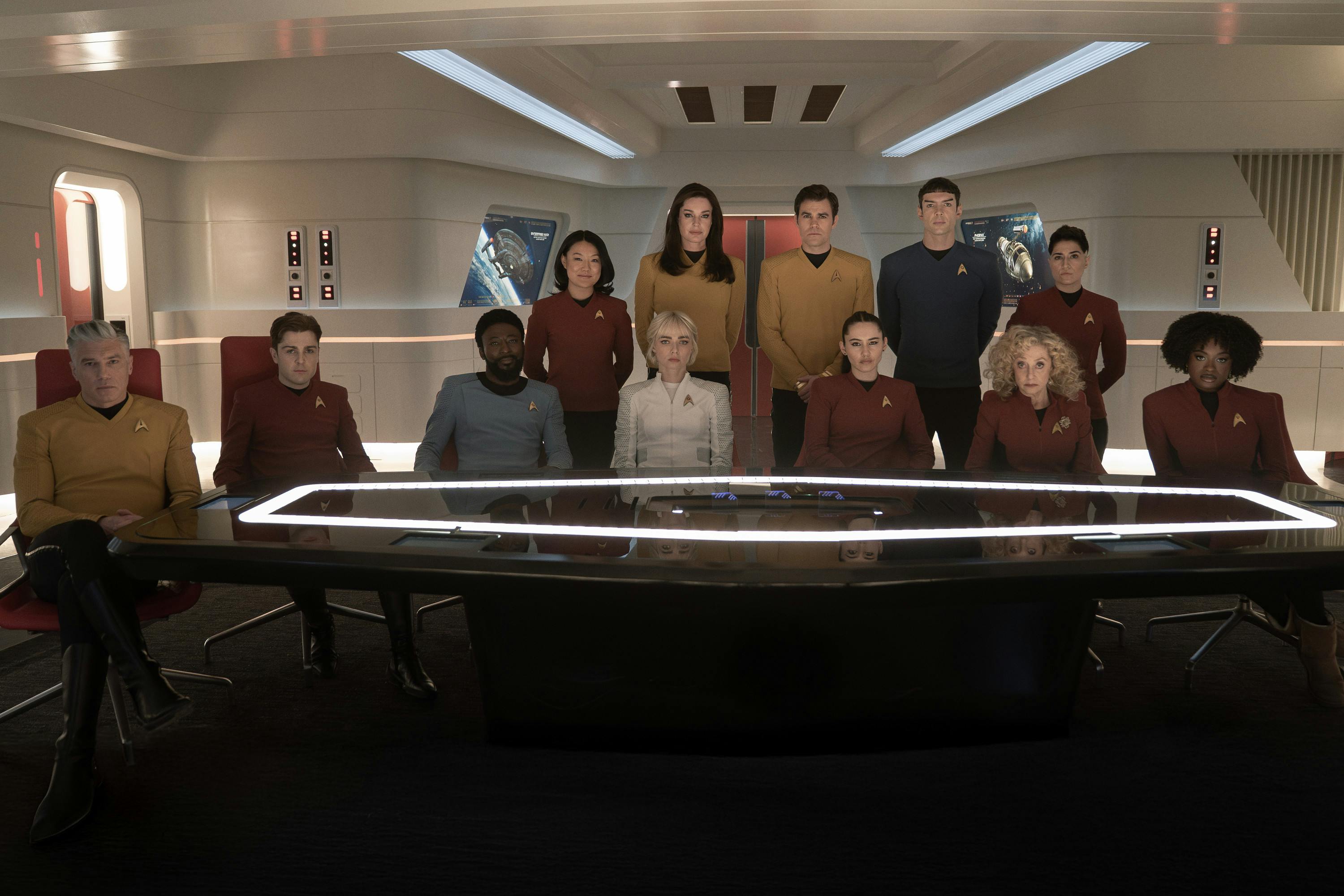
"The Sehlat Who Ate Its Tail"
"Later on in the episode, when they discover that these 7,000 lifeforms on the scavenger ship were human, I ended up intercutting," Weiss reveals. "We re-scripted it so we could intercut those scenes together. We weren't just finding out from one. These guys are on the same journey. It's someone that's a veteran and somebody that's a newbie, and that's really special relationship. I really wanted them to then be tracking the same experience at the end of the episode, and then Pike could help him through it in the final scene."
On Infusing Humor within a Heavy Episode

"The Sehlat Who Ate Its Tail"
StarTrek.com
While both captains are on their journey on their respective ships, the Enterprise's chief engineer, Pelia, is working with retro tech to help their comms issue.
"My favorite thing is a director is to mix genre," says Weiss. "I've done every genre, and the more I can in one episode, in one movie, have humor and drama, or humor and heart, or action and humor, whatever it is, that's what makes me really happy as a director. When I got this episode, I knew this was a big swing. We have a really important dramatic story. Then, we have Carol Kane and pink telephones."
"How do I fuse those as a director," Weiss questions. "It always goes back to grounding emotions, grounding the reality, making the stakes feel real. M'Benga and Ortegas, they were just so good in that scene in Pelia's quarters where they're just buying in. They think she's nuts, but they're like, 'Okay, but she might be the smartest one here.' That's how you ground the comedy. It was really fun to be able to do both."


